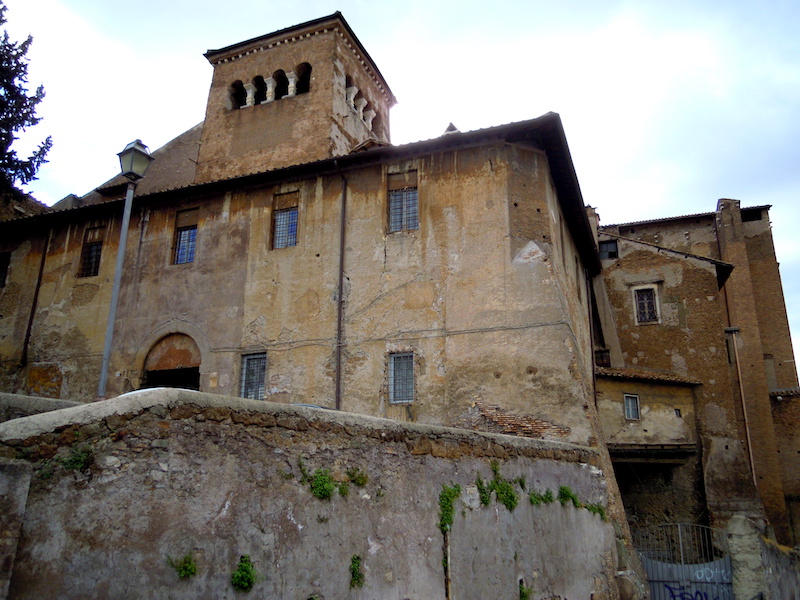Can there be a medieval fortress, surrounded by imposing walls and topped with a tower, right in the heart of Rome? The answer is yes. We are talking about the Basilica of the Four Crowned Martyrs, a place of unquestionable historical and artistic value located on the northern slopes of the Celio district, just a few meters from one of the most visited monuments in the world, the Colosseum (link), which can be explored through one of our Colosseum group tours with direct access to the Arena, the Forum, and the Palatine.
The Origins of the Basilica of the Four Crowned Martyrs
Why does the Basilica have this name? Who are these martyrs? Some historical studies suggest that they were simple Roman soldiers belonging to the personal guard of Diocletian and were killed right on the spot where the Basilica now stands because they refused to execute some sculptors who refused to carve the statue of Asclepius, thus affirming their Christian faith. The four soldiers, Victorinus, Carpophorus, Severus, and Severian, were “martyred” (or “crowned”),
The Basilica Today: A Medieval Fortress in the Heart of Rome
Today, the church has the appearance of a medieval fortress whose original core was built in the 4th century by Pope Melchiade with the name “titulus Ss.Quattuor Coronatorum,” of which the apse still survives, preserving frescoes depicting the lives of the Crowned Ones and some remains located below the church. In the 7th century, Pope Honorius I expanded the basilica, which was then subjected to radical restoration by Leo IV in the 9th century. Destroyed by the Normans of Robert Guiscard in 1084, the church of the Four Crowned Martyrs was rebuilt by Paschal II at the beginning of the 12th century in reduced forms: the original central nave was divided into three aisles by two rows of columns, and the lateral aisles were transformed into a cloister and a refectory.
The most interesting elements from an artistic point of view are undoubtedly the oratory of San Silvestro decorated with splendid frescoes dating back to the 13th century, the pictorial cycle of the Gothic Hall, discovered only in 1996 during a routine intervention under seven layers of blue plaster, and the marvelous Cosmatesque floor.
The Bell Tower and Entrance to the Church
The entrance to the Basilica is through an arched portal surmounted by the 9th-century bell tower, the oldest in the eternal city to have survived to the present day. Its shape is very simple, built in curtain, with a loggia with quadrifoils surmounted by a simple undecorated cornice. Once through the portal, you enter a first courtyard corresponding to the first entrance of the Leonine-era Church; from here, you can access the adjacent Oratory of San Silvestro. Beyond this first space, you reach a second open-air courtyard corresponding to the front part of the ancient basilica, transformed into a courtyard by Paschal II.
Years of Decline and New Use
With the temporary transfer of the papal seat to Avignon, the complex was transformed into a female orphanage, the Conservatory of the Maidens of the Cloistered Augustinian Nuns who have lived here for 450 years.
How to Visit the Basilica
The Basilica is open from 6:30 AM to 12:45 PM and from 3:30 PM to 8:00 PM; tourist visits are allowed only outside prayer hours, and explanations are given by guides outside the church. The Oratory of San Silvestro can be visited from 9:30 AM to 12:15 PM.
For the Gothic Hall, it is necessary to consult the official website aulagoticasantiquattrocoronati.it


